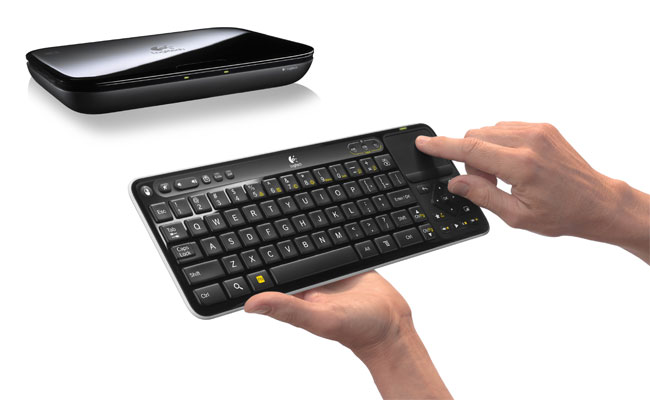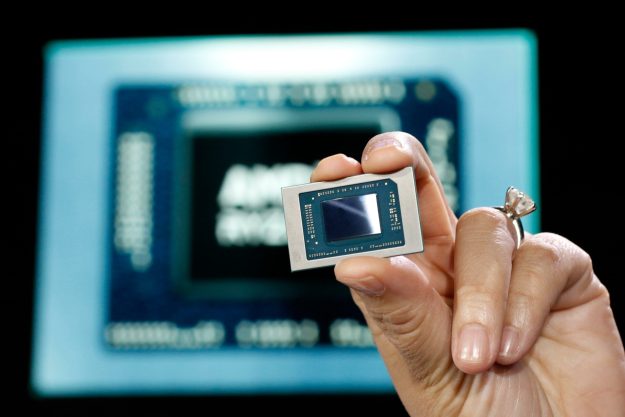
Logitech’s foray into set-top boxes with Revue was certainly no secret, but on Wednesday the company finally released the concrete details on its first batch of Google TV hardware, making it the first on the market. The line-up includes the Revue set-top box, a bundled keyboard controller, a separate mini controller, and an HD camera to enable videoconferencing.
As expected, the Revue box connects via HDMI to both a TV and cable box, serving as an intermediate controller for cable or satellite programming, and a gateway to Web-based content like YouTube. The $299.99 bundle includes both the box itself and a full-size keyboard with integrated touchpad, which serves as the controller.
In case the concept of a foot-long keyboard hanging around the sofa doesn’t fly in some households, Logitech has also reworked its old diNovo Mini to serve as a more comfortable, palm-sized controller. The six-inch-long controller features a smartphone-like QWERTY keyboard and thumb controller. Unlike the $149.99 diNovo, it will retail for $129.99.

Since the Revue will come with videoconferencing capabilities, Logitech has also released a set-top camera, the Logitech TV Cam, to enable it. Bearing an uncanny likeness to its HD Pro Webcam C910, the TV Cam also boasts Carl Zeiss optics and 720p capture capabilities, along with 5x digital zoom. Rather than using Skype, the Revue box will work with Logitech Vid, which comes preinstalled. Folks on the other end will need to download the free Vid client for Mac and PC. The TV Cam will retail for $149.99.

Check out our exclusive sneak peek at Logitech’s Revue, and stay tuned for an even more in-depth look at the first Google TV box on the market.


